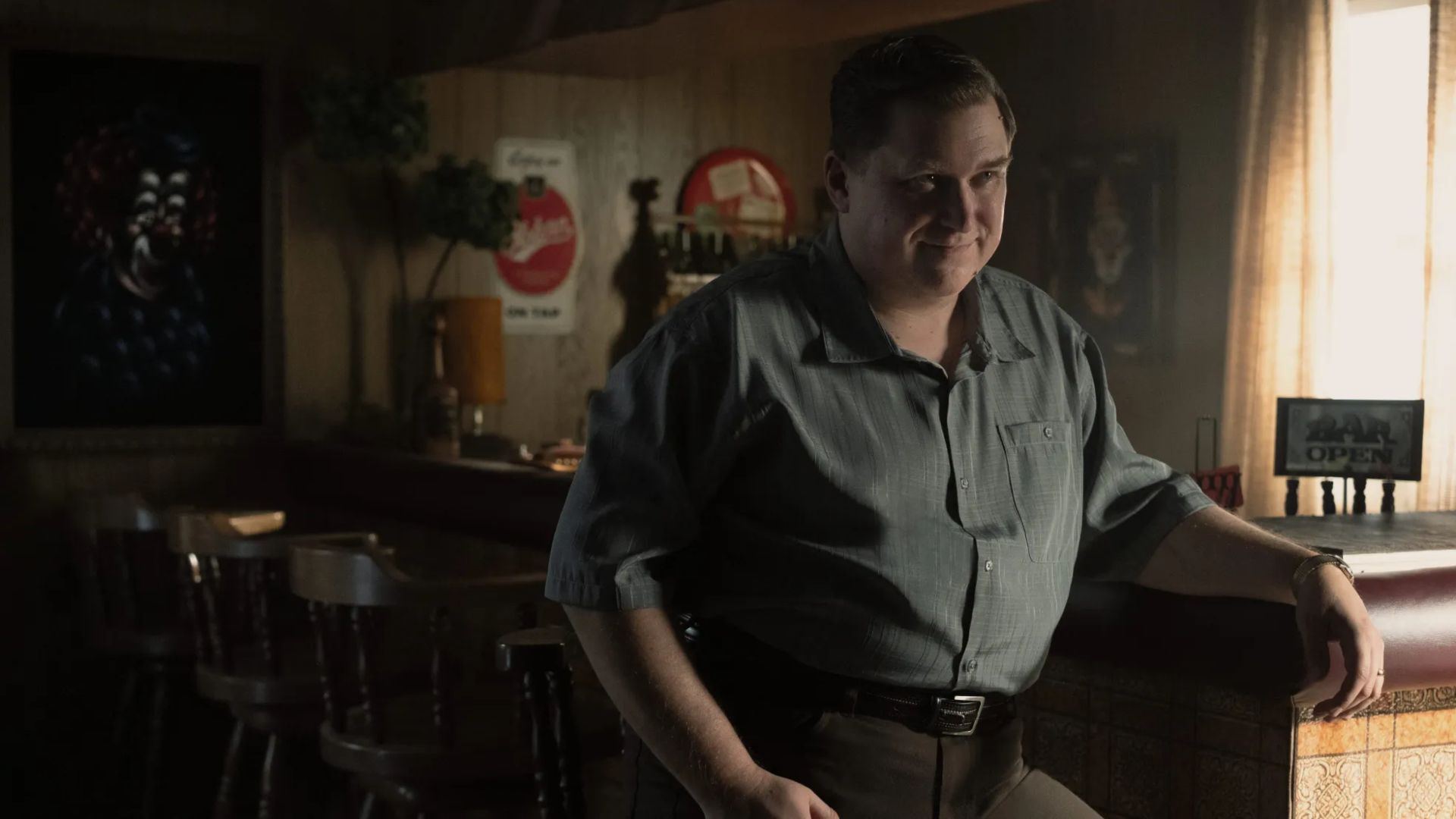
Devil in Disguise: John Wayne Gacy details the horrifying crimes of John Wayne Gacy, one of America’s most infamous serial killers. Gacy appeared to be a friendly and well-respected contractor in suburban Illinois, but this was just a disguise. Between 1972 and 1978, he kidnapped, assaulted, tortured, and murdered at least 33 teenage boys and young men, burying most of them in the crawl space under his home.
Since October 16th, the highly anticipated documentary *Devil in Disguise: John Wayne Gacy* has been available on Peacock and is already generating a lot of discussion. Many viewers and critics have drawn comparisons to Netflix’s *Monster* series, but *Devil in Disguise* stands out by presenting a realistic and unflinching portrayal of Gacy, while also focusing on the lives and stories of those he harmed.
This series mainly explores the pain, loss, and lasting emotional damage experienced by the families of John Wayne Gacy’s victims. It also reveals the biases and flaws within the justice system of the 1970s, which hindered the investigations and allowed Gacy’s crimes to continue. The story begins with the disappearance of Gacy’s final victim, 15-year-old Robert Piest, which ultimately led to his capture.
The Truth in ‘Devil in Disguise: John Wayne Gacy’

Peacock
Was Gacy Really a Clown?
John Wayne Gacy was known for performing as a clown, even at children’s hospitals and in parades where he made balloon animals. He did this partly as a way to rebel against his strict father. However, his clown persona was largely a disguise, meant to hide his true, sinister nature and create a false impression. It also allowed him to gain the trust of people in his community.
The series accurately captured Gacy’s own words, where he described feeling like he returned to being a child and enjoyed acting silly. In a 1992 interview, Gacy said putting on his clown makeup was as soothing as having a drink. He also admitted, both in the interview and in the series, that his clown persona allowed him to inappropriately flirt with and touch women. Most disturbingly, he claimed, “Clowns can get away with murder.”
Robert Piest’s Disappearance Led to Gacy’s Subsequent Arrest
I’ve always been struck by the tragic story of Robert Piest. He was just 15 years old when he vanished in 1978, and sadly, he became John Wayne Gacy’s final victim. I understand he was looking for work at a pharmacy when he met Gacy, and after that, he just never came home. His mom immediately reported him missing, which, heartbreakingly, eventually led the police to Gacy after seven awful years. As TIME magazine reported back in 1980, it all began with Robert’s disappearance…
During police questioning about the missing teenager Robert Piest, Gacy confessed to a seven-year history of murder. He admitted to luring boys and young men, sexually assaulting them, and then killing them by strangulation. Investigators found the remains of 26 victims in a crawl space under his house—26 bodies were in a 40-foot area, with one under the dining room and two buried in the yard. Four additional bodies, including Piest’s, were discovered in the Des Plaines River.
Prejudice Put Gacy’s Capture on Hold
Yes, unfortunately. According to showrunner Patrick MacManus, while communication problems with the police played a role, it’s clear that prejudice significantly hindered the investigation. This bias against the gay community allowed John Wayne Gacy to continue his crimes for years, as police often disregarded missing persons reports involving young men. A report in *The New Yorker* detailed this issue.
When police arrested Gacy for kidnapping and sexual assault, he claimed he’d offered a teenager money in exchange for sexual acts, and that the teen went to the police when he wasn’t paid. Prosecutors believed Gacy would be more convincing in court than the boy, so they dropped the charges.
Did Gacy Go to Prison for 18 Months in 1968?
The very first episode reveals that Gacy was actually imprisoned for 18 months in 1968. He was married and had two children, but his wife divorced him after he was accused of sexually assaulting a male employee that same year. The accusation involved sodomy. Although initially sentenced to 10 years, Gacy was released early due to good behavior.
Did Gacy Really Lead Police to the Bodies of His Victims?
It’s truly unbelievable, but everything you saw on the show was real. The police really were watching him closely throughout the entire investigation. And just like it was portrayed, they actually got a search warrant for his property and found… well, they found bodies. Along with those, they discovered driver’s licenses that didn’t belong to him, a class ring, and other disturbing evidence. What’s even more chilling is that he *invited* the police in for dinner – it was the awful smell coming from his vents that initially sparked their suspicion and led to the search. Once he realized they were onto him, he surprisingly cooperated, detailing his horrific crimes. He even gave them a map of his house, marking where he’d hidden the remaining bodies, and led them to the garage to show them where one was buried. It’s just… horrifying to think about.
Gacy detailed his disturbing method: he attracted young men with promises of work, brought them to his home, and then used a ruse involving handcuffs before escalating to a fatal attack. The show depicts Gacy claiming he had help, stating his weak heart prevented him from committing all the murders alone. He also said he sometimes committed the crimes while acting as a different personality, known as “Jack Hanley.”
Gacy’s Sexuality
The show accurately portrayed that Gacy consistently denied being gay, even on death row. However, the series depicts him as bisexual. Despite having been married twice and fathering two children, Gacy admitted to having had sexual encounters with men, but maintained he was bisexual and preferred women, stating, “I don’t deny that I engaged in sex with males, but I’m bisexual. My preference is women. I’ve been married enough times and have children.”
The Priest’s Lawsuit
As depicted in the show, Elizabeth Piest sued John Wayne Gacy for $85 million, alleging he murdered her daughter. She also sued the Iowa Board of Parole, the Department of Corrections, and the Chicago Police Department, claiming they were negligent in their duties. However, the lawsuit was ultimately unsuccessful.
Gacy’s Mortician Job
It’s true that John Wayne Gacy worked at a funeral home in Las Vegas. While there, he had a disturbing experience: he climbed into a young boy’s coffin, which caused him to become aroused and deeply unsettled. The incident frightened him so much that he immediately called his mother and asked to return to Illinois, despite having only been in Las Vegas for three months.
What ‘Devil in Disguise: John Wayne Gacy’ Got Wrong
Gacy’s Execution
While the series mostly stuck to the facts of the case, it did change a few small details to increase the drama, such as how Gacy was executed. The show depicts the victims’ families being told the execution had already happened, but in reality, most were completely barred from attending due to limited space for the media, lawyers, and police.
Did Dale and Billy Know Each Other?
Episode 5, called “Billy and Dale,” tells the stories of two of John Wayne Gacy’s victims, Frank “Dale” Landingin and Billy Carroll. The show imagines they were acquainted before their attacks, but this is a fictionalized detail. There’s no evidence to suggest Billy and Dale knew each other in reality.
Gacy’s Lawyer Was Real, But His Sick Son Was Not
John Wayne Gacy’s lawyer, Sam Amirante, was a real person, but the show made up the story about his son being hospitalized to add drama. It seems this was done to show how much pressure Gacy’s case put on Amirante and his family.
Devil in Disguise: John Wayne Gacy is streaming on Peacock.
Read More
- Ashes of Creation Rogue Guide for Beginners
- Best Controller Settings for ARC Raiders
- Meet the cast of Mighty Nein: Every Critical Role character explained
- Eldegarde, formerly Legacy: Steel & Sorcery, launches January 21, 2026
- Bitcoin’s Wild Ride: Yen’s Surprise Twist 🌪️💰
- Fishing Guide in Where Winds Meet
- Netflix’s One Piece Season 2 Will Likely Follow the First Season’s Most Controversial Plot
- Avatar 3 Popcorn Buckets Bring Banshees From Pandora to Life
- Beyond Entanglement: A New Criterion for Quantum ‘Magic’
- James Gunn Reveals Fan-Favorite Villain’s Fate in the DCU After Apparent Death
2025-10-20 02:43